Concrete and Fire: The crash of El Al flight 1862
Note: this accident was previously featured in episode 15 of the plane crash series on December 16th, 2017, prior to the series’ arrival on Medium. This article is written without reference to and supersedes the original.

Going down, El Al 1862, going down, going down!”
On the 4th of October 1992, the pilots of an Israeli cargo plane found themselves fighting a desperate battle in the skies over Amsterdam, a struggle which culminated in a final, chilling transmission and a horrific crash that would scar a nation forever. On final approach, just moments away from an emergency landing, the Boeing 747 rolled over, dived toward the ground, and plowed into the center of an 11-story apartment block, cleaving it in two and claiming the lives of at least 47 people. The Netherlands would never forget the images of the riven building, the burning debris, the innumerable shattered lives.
The crash of El Al flight 1862 marked the intersection of two converging narratives: the story of a neighborhood struggling to find its identity, and another featuring faulty design assumptions, questions about maintenance, and a string of seemingly related accidents and incidents around the world. Through a tragic sequence of events, the failure of a single pin would transform life for thousands of people. But first, investigators would need to find out why El Al flight 1862 came apart over Amsterdam — and take action to stop it from happening again.
◊◊◊

In Hebrew, El Al means “To the Skies,” a poignant name for Israel’s flag carrier, which has carried passengers around the world with a nearly flawless safety record since 1948. The airline is somewhat less known for its large-scale cargo operations, but in this area it has been no less impressive. The 1990s had already seen notable events in El Al’s cargo division: on May 24th, 1991, an El Al Boeing 747 freighter set the standing record for the most people carried on board an aircraft when it evacuated 1,088 Ethiopian Jews ahead of an escalating civil war. But just fourteen months later, another El Al 747 would make history again, for all the wrong reasons.

On the 4th of October 1992, El Al flight 1862 arrived at Amsterdam’s Schiphol Airport for a routine stopover on an overnight cargo flight from New York to Tel Aviv. The 13-year-old Boeing 747 carried a diverse cargo of consumer goods, including fruit, computer parts, and perfume bound for the Israeli market. The crew consisted of three highly experienced pilots: 59-year-old Captain Yitzhak Fuchs, a veteran airman with over 25,000 hours; 32-year-old First Officer Arnon Ohad, who was no rookie himself at over 4,200 hours; and an even more experienced Flight Engineer, 61-year-old Gedalya Sofer, who had 26,000 hours to his name, more than half of them on the Queen of the Skies.
For the leg from Amsterdam to Tel Aviv, they would also be joined by a non-revenue passenger: 23-year-old Anat Solomon, whose fiancé Itzik Levi worked for El Al in Amsterdam and had used his connections to get her a free flight to Israel aboard the cargo plane. Tomorrow was her 24th birthday, and she was heading back to her home country to prepare for their wedding, which had been scheduled for January. But as Levi saw her off at the airport, he could not have known that the wedding would never arrive, and that tragedy, for him and for so many others, was already inevitable.
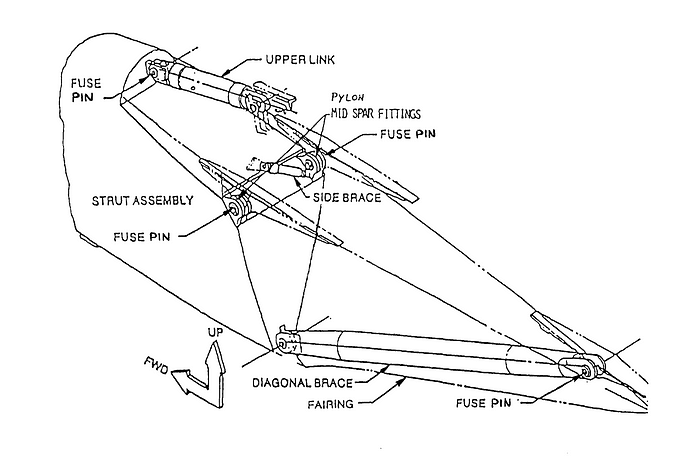
The fates of those on board were irreversibly intertwined with a problem that had been developing inside the 747’s engine pylons since the day it rolled off the production line in 1979. The pylon is the cantilevered structure which attaches the engine to the wing — an area with few moving parts, but which must withstand enormous stress throughout the course of every flight.
The Boeing 747 engine pylon is attached to the wing by four fittings: one at the front, one in the back, and two in the middle (or midspar). Each of these fittings consists of a wing-mounted male lug and a pylon-mounted female lug, which are connected by a fuse pin. The four fuse pins are the weakest part of the pylon, but this is by design. Every airplane system and structure contains planned failure sequences which work to minimize damage in the event of an overload. In the case of the 747’s engine pylons, the fuse pins were designed to fail at a lower load threshold than the fittings themselves, ensuring that if the engine is torn off the wing — perhaps due to extreme turbulence, or a gear-up landing — the fuse pins will fail first, causing the engine to separate cleanly without ripping open the fuel tanks located directly above it. In theory, this should allow an engine to break off upon reaching its design load limit without starting a fire or otherwise compromising the plane’s ability to fly.
Designing a fuse pin which is both strong enough to hold an engine to the wing for years on end, and also weak enough to reliably fail first in the event of an overload, is no easy task. In 1979, Boeing discovered that the fuse pins originally installed on its 747s were in fact suffering from metal fatigue much earlier than expected. In August of that year, the company issued a service bulletin to all operators recommending that the pins be inspected every 2,500 flight hours, an inspection which was shortly thereafter made mandatory by the Federal Aviation Administration. Boeing followed up in 1981 with a new fuse pin design which, when installed, would terminate the inspection regime. But these pins soon suffered from fatigue as well, and not everyone installed them: El Al, for instance, kept the original pins, and continued to inspect them every 2,500 hours.
However, no inspection is perfect. The accident airplane, 4X-AXG, had been inspected on June 17th of that year and its fuse pins were given a clean bill of health — even though cracks had begun to form in the fuse pins on pylon three, creeping across the weakened shear faces where the pins are designed to break in the event of a structural overload.
The problem is that in an overload situation, the pins are supposed to break in a specific order, and if that order is disrupted, a clean separation will not occur. In fact, the pins at the front and back of the pylon are slightly weaker, causing them to break first, followed by the two pins in the middle, which should allow the engine to rotate up and over the top of the wing. But on 4X-AXG, the inboard midspar fuse pin — the one closer to the fuselage — had nearly progressed to the point of failure, while the others retained their strength, a sequence which, as it turned out, would produce an altogether different outcome.

As dusk fell over Amsterdam, El Al flight 1862 sped off down the runway, its four Pratt & Whitney JT9D engines propelling it into the sky. The plane climbed away normally, heading north, then turned east over the city, passing through 6,000 feet over the harbor. And then, without warning, disaster struck.
Under normal flight loads, the cracked inboard midspar fuse pin on the number three engine pylon broke on its inboard shear face. That meant the loads on the engine pylon were transferred only through the outboard lug of this wing fitting, instead of both lugs. Under the extra stress, the outboard lug of the inboard midspar fitting broke, and the failure cascaded from there, as the outboard midspar fuse pin also broke under the redistributed load, followed by the fore and aft fuse pins. If the midspar fuse pins had failed last, as designed, the number three engine would have rotated harmlessly up and over the wing, but instead it shot forward under its own momentum, fell back, and slammed directly into engine four, tearing it from the wing as well. Dislodged by the massive impact, a huge section of the leading edge of the wing, from one meter inboard of engine three to one meter outboard of engine four, ripped out in a matter of seconds. Hydraulic lines burst, pneumatic systems failed, and the 747’s leading edge Krüger flaps — critical for low-speed flight — fluttered away into the evening sky.

How exactly the pilots reacted will never be known, but evidence indicates Captain Fuchs took control from First Officer Ohad and leveled the plane, overcoming the massive yaw to the right induced by the failed engines and damaged wing. Instruments would have indicated the failure of both engines, but the engines of a 747 are not visible from its cockpit, so they had no way of knowing that engines three and four had physically departed the airplane. A fire alarm sounded, warning of a fire in engine three; Flight Engineer Sofer activated the fire suppression system, but it did nothing — the alarm was false, and the fire extinguishers were no longer attached to the plane anyway.

“El Al 1862, mayday, mayday, we have an emergency!” First Officer Ohad said breathlessly to air traffic control.
“El Al 1862, do you wish to return to Schiphol?”
“Affirmative, mayday, mayday, mayday!” Ohad repeated.
“Turn right heading 260,” the controller said, trying to give them the quickest route back to the airport. “Field, uh, behind you… in your, to the west, distance 18 miles.”
“Roger, we have fire on engine number three, we have fire on engine number three!” Ohad reported.
“Roger, head 270 for downwind,” the controller said, directing the flight back to the west to intercept the approach course for a northeasterly landing on runway 06, the active landing runway.
“El Al 1862, lost number three and number four engine, number three and number four engine!” Ohad said, providing a more dire update.
“Roger, 1862,” the controller said, scrambling emergency services to intercept the plane on landing.
“What will be the runway in use for me at Amsterdam?” Ohad asked.
“Runway zero six in use sir, surface wind zero four zero at twenty-one knots,” the controller reported.
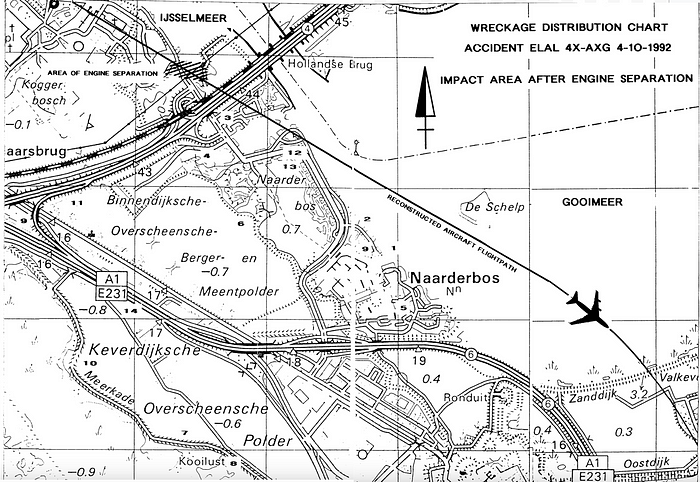
Far below, boaters near Lake Gooimeer east of Amsterdam watched in astonishment as two engines tumbled from the stricken 747 and plunged into the lake. A yacht sailing on the adjacent IJsselmeer told the maritime Rescue Coordination Center that “an aircraft has lost part of an engine” and that “only one side of the engines is still working,” at which point RCC contacted the Schiphol control center to ask if a plane was in distress in the area. “We know about it,” the center told RCC, and the call was ended. Another boater subsequently called RCC to report that the plane “must have lost one or two of its engines,” and that “the two right hand engines are off and the port engines are still on.” But somewhere in this game of telephone, the knowledge that the engines had physically fallen off the plane was lost, and neither air traffic control nor the pilots ever realized the true nature of the emergency.
Meanwhile on board the plane, Captain Fuchs had evidently decided that runway 06 was not ideal. To air traffic control, First Officer Ohad said, “We request 27 for landing.”
Runway 27 was the longest and closest runway at Schiphol. Landing on this runway would leave them with a significant tailwind, but Captain Fuchs clearly felt that he was in danger of losing control and needed to get the plane on the ground as quickly as possible. He had to use more than 60% of his control authority in both roll and yaw just to hold the wings level — way beyond what he would have expected from a mere double engine failure. Something else was clearly wrong with the wing. Was it on fire? Had they been hit by a missile? We don’t know exactly what he was thinking, but he must have known something was seriously amiss.

However, they now had another problem: flight 1862 was descending through 5,000 feet while only 13 kilometers from the threshold of runway 27, much too high and close to effect a landing. First Officer Ohad reported that they needed 22 kilometers in order to line up and descend, so the controller was forced to route flight 1862 onto a 360-degree loop directly over Amsterdam.
“El Al 1862, just to be sure, your engines three and four are out?” the controller asked.
“Number three and four are out and we have, uh, problems with our flaps,” Ohad replied.
As the pilots began extending the flaps in order to slow down for the approach, it would have become apparent that something was wrong with the leading edge Krüger flaps on the right wing. The problem was that these flaps were entirely gone, but it’s not clear how this manifested to the crew, and they certainly did not know the true extent of the damage.
“Problem with flaps, roger,” the controller said.
“Heading 100, El Al 1862.”
“Thank you, 1862.”
“Okay, heading 120 and turning, uh, maintaining.”
“Roger, 1862. Your speed is…?” The controller asked.
“Our speed is 260,” First Officer Ohad reported.
“Okay, you have around thirteen miles to go to touchdown,” the controller said. “Speed is all yours, you are cleared to land runway 27.”
But flight 1862 was moving too fast, and the pilots were having trouble lining up with the runway. “El Al 1862, you’re about to cross the localizer due to your speed,” the controller warned. “Continue the right turn, heading 290, twelve track miles to go!”
“Roger, 290,” said First Officer Ohad. The runway heading was 270 degrees — due west — but they had flown past it to the south, and needed to turn back to the north to reach it.
“El Al 1862, further right, heading 310, heading 310,” said the controller.
“310,” Ohad hastily acknowledged.
“El Al 1862, continue descent 1500 feet, 1500.”
“1500, and we have a controlling problem!” Ohad reported.

On board the stricken freighter, the pilots fought to stay level, but the plane was rolling uncontrollably to the right. Captain Fuchs jammed his control column all the way to the left, but it wasn’t working.
Fuchs was losing control of his plane due to two converging principles of aerodynamics. First of all, the asymmetric thrust produced by the engines, as well as the damage to the right wing, gave the plane a strong inherent desire to roll to the right, a problem which became worse as flight 1862 slowed down for landing. At lower speeds, a plane must fly at a higher angle of attack — the angle of the wings relative to the airflow — in order to maintain lift. But at higher angles of attack, the difference in lifting capability between the intact left wing and the damaged right wing increased, further exacerbating the roll. At the same time, the effectiveness of an airplane’s flight controls decreases proportionally with its speed, meaning that as the plane decelerated and the roll moment increased, Captain Fuchs’ ability to counteract it with the controls became progressively more limited. His authority was constrained even further by the fact that the outboard ailerons had lost hydraulic power.
Calculations would later show that below 270 knots — about twice the normal landing speed — flight 1862’s pull to the right would begin to exceed the combined authority of the ailerons and rudder, and below 260 knots, control would be lost altogether. The pilots, however, were flying blind. Unaware that decelerating would lead to inevitable disaster, they allowed their speed to drop below 260 knots. Almost immediately, the plane began turning right, veering off the runway heading and into a steepening bank. Captain Fuchs turned his control column all the way to the left and pushed the left rudder pedal to the floor, but it was no use. The nose began to fall as the bank increased. They were spiraling in.

First Officer Ohad keyed his mic, capturing frantic shouting in the background: “Raise all the flaps, raise all the flaps, lower the gear…”
And then, to air traffic control, he broadcast a chilling final message: “Going down, 1862, going down, going down!”
Seconds later, pitched 70 degrees nose down and banked 90 degrees to the right, flight 1862 plowed directly into the roof of an 11-story apartment building. A massive explosion ripped through the quiet suburban skyline, rising over Amsterdam like a beacon of destruction.
The tower controllers at Schiphol Airport watched in horror as the smoke and flames rose up on the horizon. “It’s over,” someone said.
“El Al 1862, your heading?” the approach controller hesitantly asked, unable to see the grim panorama from his windowless building.
“It’s useless Henk, he’s crashed,” said the tower controller.
“Did you see it?”
“One big cloud of smoke over the city,” the tower confirmed. There was nothing they could do: El Al flight 1862 was down.

For the residents of the Klein-Kruitburg and Groeneveen apartment blocks in the Amsterdam suburb of Bijlmermeer, the pleasantly warm October evening was suddenly ruptured by the roar of jet engines. Some residents saw the 747 coming and had just enough time to duck out of the way of the wall of fire which ripped through their homes, but most never knew what hit them. The plane impacted the tower with tremendous force, cleaving it in two; an enormous explosion immediately followed, engulfing dozens of flats, as a section of the building 30 meters wide and ten stories deep collapsed inward like a house of cards.
For those who lived in the destroyed flats, there was no possibility of survival. But those living adjacent to the gaping hole had a chance, if they were quick. Fleeing the towering inferno, people hurried to the staircases and made it out to the street, escaping with little more than the clothes on their backs. In one area, the exterior walkways were blocked by flames, and several people were seen attempting to jump from a seventh floor balcony. Others sprang into action as rescuers, kicking down jammed doors and pulling stunned residents from their burning apartments. But as firefighters would later discover, the damage had already been done: virtually everyone who survived the initial impact managed to get out alive within minutes, thanks to the heroic actions of their fellow residents, and the design of the building, whose concrete walls and sparse apartments left little to burn.

Firefighters arrived just a few minutes after the crash to find a scene of total devastation. A gaping hole, surrounded by fire, had been torn through the intersection of two apartment blocks, and many of the surrounding flats were ablaze. Debris from the plane had shot clear through the building and out the other side for another 400 meters, setting fire to trees and landscaping. First responders, shocked by the scale of the disaster, called for all the help they could get, and seventy ambulances hurried to the Bijlmermeer, prepared for mass casualties. But as firefighters scoured the still-burning tower, they couldn’t find any victims: in fact, everyone who ultimately survived had already fled. The number of injured would eventually be pinned at 26, but most of these were minor, and all but two made it to hospital in private cars and taxis. It would be hours before firefighters realized that the dead were right in front of them the whole time, shredded beyond recognition and buried within a mountain of twisted metal and shattered concrete. It would be months before anyone could say how many had died, but everyone feared the worst: by the end of that night, the number of missing people had risen to as many as 250, and officials publicly speculated that up to 200 may have perished in the crash and the inferno which followed.

Part of the difficulty in ascertaining the number of victims lay in the troubled history of the Bijlmermeer. Perhaps ironically, given its fate, the neighborhood was conceived in the late 1950s and early 1960s as a revolutionary modernist architectural project, intended to transform the way we live in cities. The planned neighborhood outside Amsterdam would feature thousands of identical apartments — in Bijlmermeer, everyone would be equal — replete with common spaces, parks, and all the amenities necessary for a self-sustaining community. Automobiles and pedestrians would be kept separate through the use of elevated streets connecting to high-rise parking garages, while the ground belonged to pedestrians, who could utilize an unbroken network of footpaths, lawns, and canals. The buildings were arranged in a unique honeycomb shape to ensure that every apartment overlooked green space and received sunlight during the day. As construction got underway in the 1960s, the architects presented a utopian vision of a community which would be happier, healthier, and less crowded than the disorganized pre-modern cities of Europe. In the end, they would turn out to be tragically wrong.

When the Bijlmermeer opened to residents in the early 1970s, it had not yet been hooked up to the Amsterdam metro system, and the only way to reach the neighborhood was along a single unpaved road through the fields outside the city. Shopping centers and other amenities had not materialized, and the grass and trees had yet to be planted. Instead of the promised utopia, the neighborhood was dominated by huge, sterile white tower blocks which rose up from a ghastly desert of bare dirt, completely disconnected from any semblance of community or character. Prospective residents cancelled their interviews in droves, but the architects insisted on finishing the original plan — 31 massive buildings, 13,000 flats, and over a dozen parking garages for cars which would never come. By the time it was finished, the vision of its designers was already dead. They had built a utopia in which nobody wanted to live.
Instead, the Bijlmermeer became a convenient place for the City of Amsterdam to house immigrants from former Dutch colonies who couldn’t afford the scarcer housing near the city center. Thousands of Surinamese, most of them Dutch citizens, were resettled in the Bijlmermeer despite its almost total lack of services. Numerous Ghanaians followed, and then other groups, including immigrants from dozens of countries, LGBT people, and others encompassing a complete cross-section of the most marginalized members of Dutch society. Many of them lived as squatters amid the vast landscape of empty apartments, thanks largely to racist Dutch landlords who refused to rent flats to black people. Lease agreements were eventually offered to most of the squatters only because it was more expensive to remove them.

By the 1990s, the Bijlmermeer had become the most diverse neighborhood in Amsterdam, but it was also one of the poorest. With so many residents who couldn’t afford to pay rent, the building owners couldn’t pay for maintenance, and the towers started falling apart. A quarter of the flats remained empty, and drug dealers and criminals set up operations in the unoccupied buildings, leveraging the lack of legitimate job opportunities for the local residents in order to construct an underground network of crime. The metro line eventually reached the neighborhood, and stores did open, but the fundamental problems remained unsolved. After seeing what his vision had become, the man who designed the Bijlmermeer walked out of his office and never returned.
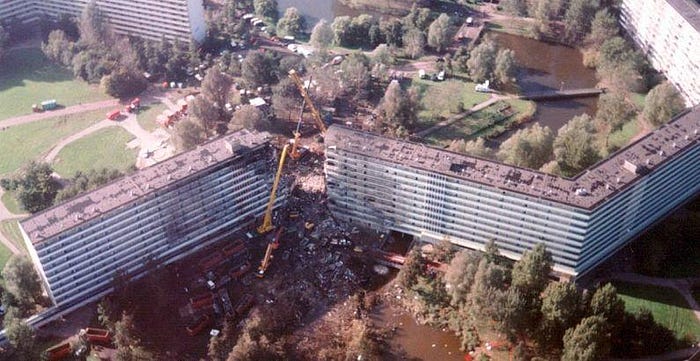
When El Al flight 1862 slammed into the Bijlmermeer, it ripped a bloody gash through this at once thriving and troubled immigrant community on the margins of Amsterdam. The ruined apartment blocks were home to numerous undocumented immigrants, especially from Ghana and Suriname, and there was considerable uncertainty about whether they would be properly accounted for. After examining the recovered remains and cross-referencing with missing person reports, forensic pathologists eventually concluded that 47 people had died — all three pilots; the sole passenger, Anat Solomon; and 43 people on the ground. But given the state of the bodies, there was plenty of room for doubt. Residents to this day believe that an unspecified number of undocumented immigrants were not included in the death toll because they were unknown to the authorities and they had no relatives in the country who could report them missing. However, the real death toll on the ground — whether it was 43, or something else — certainly fell short of the initial estimates, in large part due to the fact that most of the gutted apartments burned after people had already escaped, and because the pleasant weather that evening saw more people out on the street when they would otherwise have been at home.

Meanwhile, experts from the Netherlands Aviation Safety Board launched into what would prove to be the most difficult investigation in the agency’s history. Several parts of the right wing leading edge were found on land next to the Gooimeer, but the engines themselves had disappeared into the water, taking with them valuable evidence. By the time divers had recovered the wreckage from the murky depths, corrosion had already set in, complicating their analysis of the various fracture surfaces.
Investigators were similarly disappointed in their search for the black boxes. Sorting through a massive pile of aircraft and building debris in a nearby dump site, the Safety Board was eventually able to locate the badly damaged flight data recorder, but the cockpit voice recorder was never found. Frustrated by their inability to locate it, the investigators grilled El Al on whether a CVR had in fact been installed, but the documentation showed the plane certainly had one. Investigators were forced to conclude that the CVR had probably been destroyed in the crash or the subsequent fire, but they could not rule out the possibility that someone stole it during the chaotic first hours after the accident, when police struggled to secure the vast crash scene against opportunistic looters.
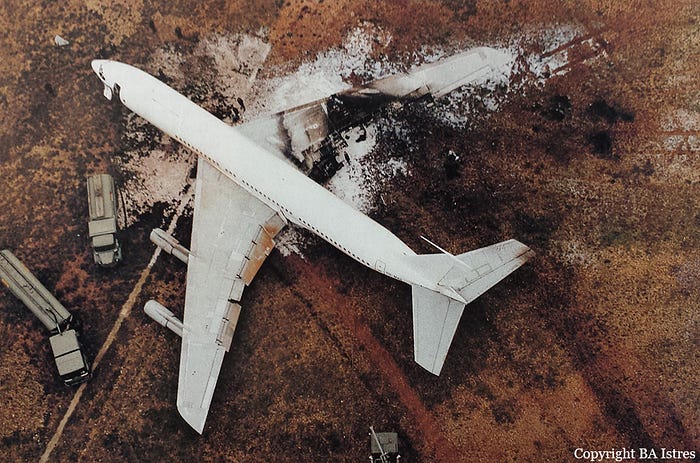
An analysis of the wreckage recovered from the Gooimeer revealed that the engines had been working properly until they separated from the wing, with evidence instead pointing toward a structural failure of the number three engine pylon. In this area of inquiry, investigators were aided by the fact that flight 1862 was far from the first time this had happened. The first recorded instance of an engine falling off a Boeing 747 occurred in 1979, when an engine partially separated from a cargo plane landing in London. The problem struck again in the early 1990s, when a spate of incidents occurred both before and after the disaster in Bijlmermeer, involving both the 747 and the older 707, which uses the same pylon design. Most notably, on December 29th 1991, China Airlines flight 358, a Boeing 747 freighter, crashed in Taiwan, killing all five crew, after the number three engine separated and hit the number four engine, leading to a loss of control. Although the investigation was still ongoing at the time, evidence indicated that the outboard midspar fitting in the number three engine pylon had failed. Several other incidents ended safely. On March 31st 1992, Trans-Air Service flight 671, a Boeing 707 freighter, suffered a failure of the inboard midspar fitting on the number three engine pylon, leading to the separation of both engines three and four. Despite severe damage and an uncontrolled fire burning on the wing, the pilots made a successful emergency landing. Subsequently, on April 25th, a Boeing 707 freighter lost its number three engine after takeoff from Miami due to a fatigue failure of the inboard midspar fitting, and on March 31st 1993, an Evergreen Boeing 747 lost its number two engine after takeoff from Anchorage, Alaska.

In the case of flight 1862, the number three engine pylon’s inboard midspar fitting and its associated fuse pin were never found, having been lost in the mud beneath Lake Gooimeer. However, damage to the other fittings could only be explained if the inboard midspar fuse pin had failed first.
Although they could not assess the extent of the fatigue damage on the fuse pin which started it all, investigators did find similar damage on the outboard midspar fuse pin, which was recovered. This fuse pin had a fatigue crack four millimeters deep which stretched 50% of the way around its inner bore, apparently originating at several separate points along an abnormal machining groove. When the inboard fuse pin broke and loads were transferred to the outboard pin, this pin failed along the pre-existing crack.
The question necessarily arose as to whether El Al should have detected this crack, and by extension the presumed crack in the opposite fuse pin, at its last inspection in June 1992. Boeing contended that the striations in the fuse pin, like the rings of a tree, revealed its depth to have been around 3.5 millimeters at the time of the inspection, well above the minimum depth of 2.2 millimeters required for detection by ultrasound equipment. On the other hand, El Al argued that the striations revealed a rapid growth in the depth of the crack after the inspection was performed. The Netherlands Aviation Safety Board, dismissing both theories, wrote that the fracture surface was too corroded to determine how fast the crack grew or how long it had been there.

The Safety Board eventually concluded that El Al flight 1862 was doomed from the moment of the failure. Considering the damage to the flaps, ailerons, hydraulics, and other systems, the plane was only just barely flyable at high speed, and would become uncontrollable below 260 knots. Without knowing the full extent of the damage, there was no way for the pilots to predict this behavior. And even if they had been informed — say, if the communication between the maritime and air traffic authorities had been more precise about what exactly fell off the plane — it’s not clear it would have made any difference. Landing safely at such high speed is impossible; the landing gear will collapse, the fuel tanks will likely rupture, and the plane will break apart, leading to a catastrophic accident. Compared to a high-speed dive into a building, the chances of survival for the crew would have been, at most, marginally improved.
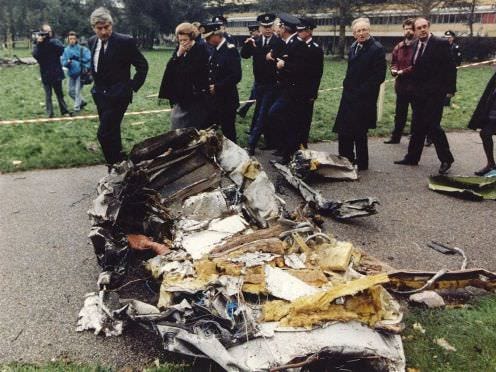
The crash of flight 1862 and the other related incidents revealed a fundamental flaw in the design of the pylons used on Boeing 747s and 707s. The design originated during production of the 707 in the late 1950s, prior to the FAA’s introduction of full-scale fatigue testing requirements to determine the likely time until failure of most structural elements. At the time, manufacturers were only required to determine the fatigue characteristics of a structural element if it was not failsafe, and if its failure could lead to the loss of the airplane. In the case of the pylons, Boeing conducted a detailed analysis which showed that the engine and pylon would separate cleanly without damaging the wing or fuel tanks in any conceivable overload scenario, thus rendering the design failsafe, as its failure would not lead to the loss of the airplane. Because the pylon design was ruled failsafe, Boeing did not need to fatigue test the individual components, including the fuse pins. This loophole prevented Boeing from discovering the fact that a failure of a single fuse pin would bypass the failsafe design and could lead to catastrophic damage.

In the late 1960s, during certification of the Boeing 747, Boeing argued to regulators that because the essentially identical 707 pylon had performed flawlessly in service, no new testing would be required for its use on the 747. The FAA accepted this explanation, and no fatigue tests were required. Boeing did conduct its own fatigue test of the pylon in order to determine maintenance and inspection intervals for its components, but the test ultimately failed to replicate real-world conditions, where corrosion and manufacturing defects often reduced the fatigue life of the fuse pins. Nor was this test intended to determine what would happen if a fuse pin actually failed. As a result, Boeing only discovered that its calculations were wrong when fuse pins started failing in service, leading to the new inspection requirements introduced in 1979. But as the crash of El Al flight 1862 had demonstrated, regular inspections could not guarantee that a fatigue crack in a fuse pin would be caught before progressing to the point of failure. And if it did fail, the loss of the airplane was evidently possible, as it had now happened not once, but twice. The assumptions on which the pylon was designed were therefore deemed faulty.
As a result of these findings, Boeing redesigned the pylon to ensure that it was actually failsafe. Operators were required to replace their existing fuse pins with a new, stainless steel version that would be less vulnerable to corrosion and fatigue cracking. A new brace was also installed inside the pylon which would ensure that the failure of a single fuse pin would not lead to the separation of the engine, introducing an element of redundancy which brought the design into compliance with regulations. Since these updates, no more engines have fallen off of Boeing 747s or 707s due to failure of the attachments points.

Airline passengers may have been grateful for these safety improvements, but for the residents of Bijlmermeer, other matters took center stage. In the months and years after the crash, a number of residents of the destroyed apartment block and its neighbors reported developing an unidentified chronic illness which they attributed to their exposure to the disaster. The allegations led to speculation that the ill-fated cargo plane was carrying something besides mere household products. Further inquiry eventually revealed an undisclosed shipment of 190 liters of dimethyl methylphosphonate, a chemical used in both the production of nerve gas and the testing of nerve gas detection equipment. Although some accused Israel of transporting the chemical in order to produce banned weapons, the low quantity aboard the flight would have been more useful for testing purposes. Furthermore, it was difficult to see how the chemical could have caused the illnesses, because dimethyl methylphosphonate is non-toxic until combined with other compounds to make nerve gas.
Another potential culprit was the depleted uranium ballast installed in the tail sections of some early 747s, including the accident airplane. It was contended by some that the uranium could have been dispersed around the crash site, poisoning those who lived nearby. However, experts who studied the theory concluded that the depleted uranium would only have been harmful if ingested in the form of dust or vapor, and that the crash was not powerful enough to have disintegrated the uranium to such an extent.

One final explanation, which has only been seriously proposed in recent years, is that the health effects occurred due to the inhalation of dust from the collapsed building. The effects of inhaling this dust were not well understood until research was conducted into the matter following the collapse of the World Trade Center during the 9/11 attacks, which led to chronic health complications for tens of thousands of people exposed to the resulting dust cloud. This research didn’t become available until long after the inquiries into the health problems in Bijlmermeer concluded in the late 1990s. Could toxic dust from the apartment building explain the lingering health problems suffered by those who lived near the crash site? At the very least, more research would have to be conducted, and we may never know for sure, but the theory seems worth considering.
The mystery illness would not be the only long-lasting effect of the crash on the surrounding community. In fact, depending on who you ask, Bijlmermeer is a better place today because of it. The sudden destruction of one of the hulking apartment blocks, and the resulting attention paid to the neighborhood, provided justification for Amsterdam to rethink the design of the Bijlmermeer. Experts in urban planning hypothesized that the neighborhood would be better served with a wider range of living options, more amenities, and better opportunities for its residents. In the years following the accident, the city tore down one quarter of the big apartment towers, as well as most of the parking garages and the elevated highways, and replaced them with a variety of smaller apartment complexes ranging from one to five stories, as well as some single-family homes, all interspersed over the neighborhood’s original footprint. More businesses were opened, along with drug rehabilitation centers and a career center to help residents find jobs. The improvements appear to have significantly reduced crime and improved living conditions.
However, while the Bijlmermeer remains one of the most diverse neighborhoods in Amsterdam, its transformation has exposed it to gentrification — a threat which may cause some longtime residents to look back on its troubled history in a different light. Certainly, it would be just as much a tragedy to pave over the neighborhood’s history as a refuge for marginalized groups as it would be to forget the people who lost their lives on that terrible evening in 1992. If that character can withstand the changes which have been made, then the disaster will have left a positive dual legacy, improving safety not only in the air, but on the ground as well — an unusual place in history for an accident unlike any other.
_____________________________________________________________
Join the discussion of this article on Reddit!
Visit r/admiralcloudberg to read and discuss over 200 similar articles.
You can also support me on Patreon.
